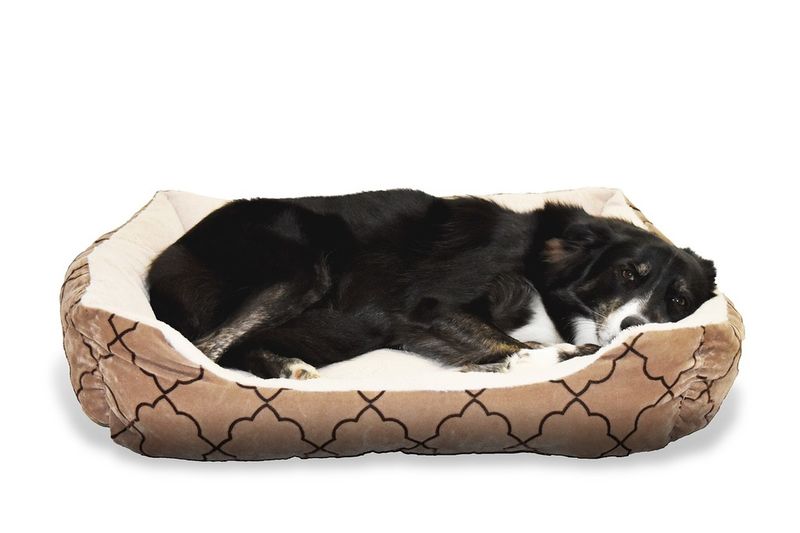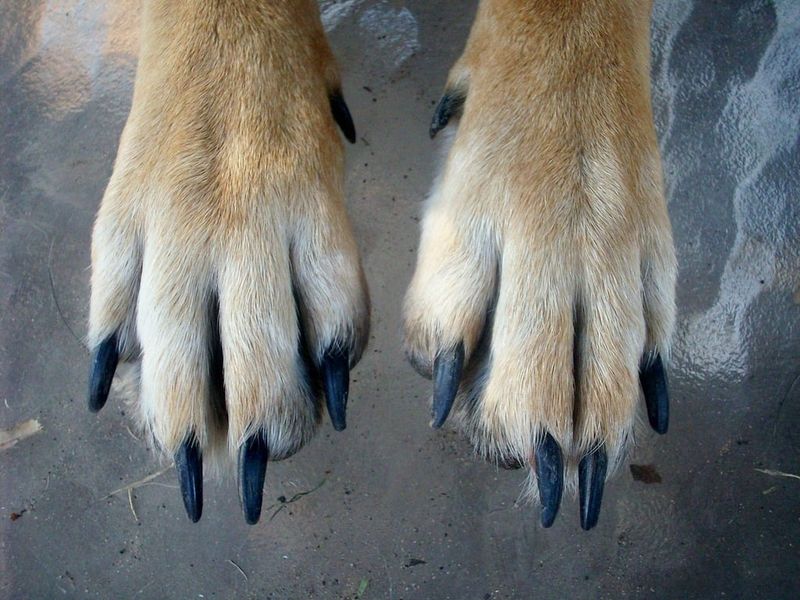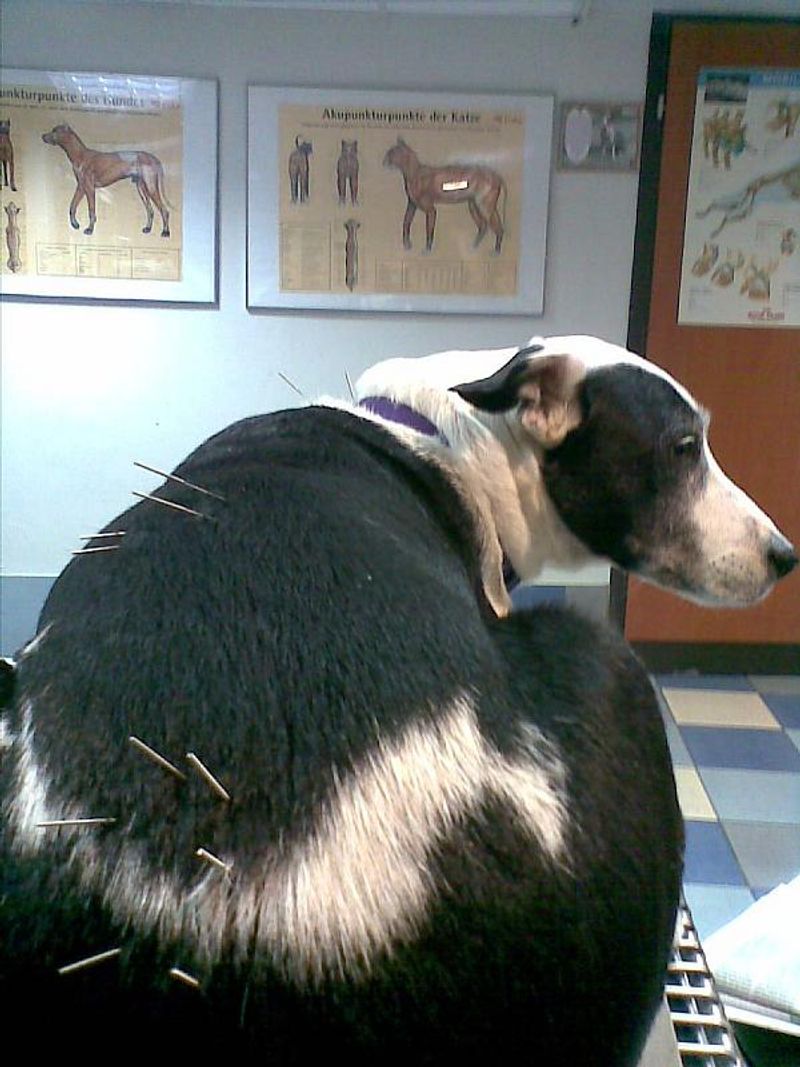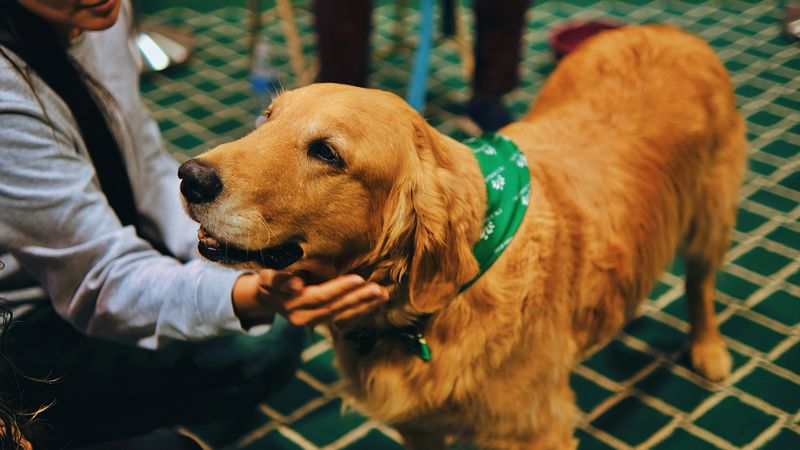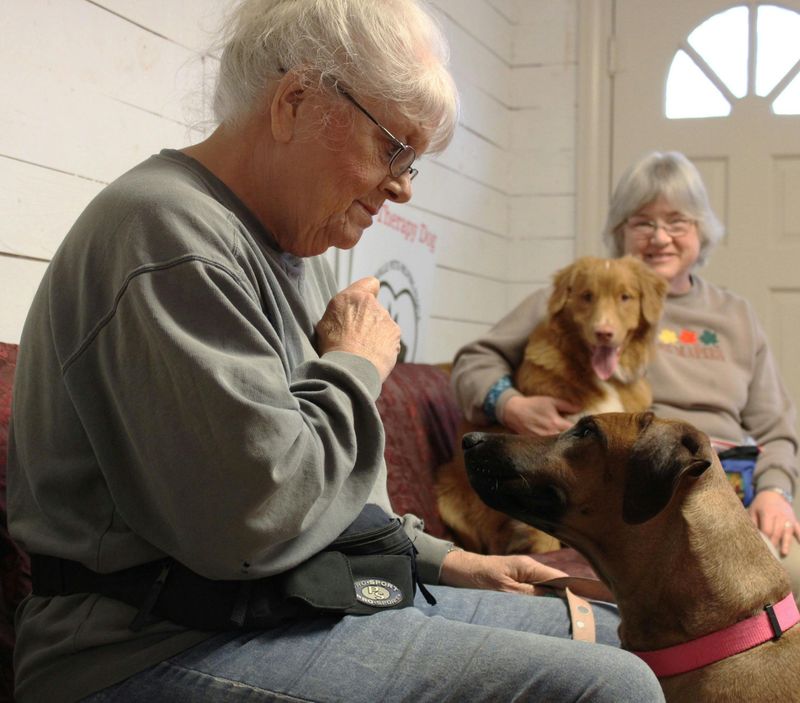Caring for senior dogs with arthritis requires patience and a thoughtful approach to their needs. From dietary changes to modifications at home, every small adjustment can make a significant difference in their comfort and quality of life. Here are 19 practical tips to help manage arthritis in your furry friend.
Schedule Regular Veterinary Checkups
Regular vet checkups are essential for managing arthritis in senior dogs. These visits ensure that any changes in your dog’s condition are promptly addressed. A veterinarian can provide valuable insights into pain management and appropriate treatments.
Frequent checkups also allow for early detection of related health issues. Your vet may suggest adjustments in medication or therapy to improve your dog’s quality of life.
Building a strong relationship with your veterinarian guarantees tailored care for your loyal companion, ensuring they enjoy their twilight years with comfort.
Maintain a Healthy Weight to Reduce Joint Stress
Maintaining an ideal weight is crucial for dogs with arthritis, as excess weight puts additional strain on their joints. Work with your vet to determine the optimal weight for your dog, and adjust their diet accordingly.
Incorporate low-calorie snacks and monitor portion sizes to prevent overeating. Regular weigh-ins can help track progress and keep you informed of any necessary changes.
Through careful management of their weight, you contribute significantly to reducing joint pain and improving overall mobility.
Provide a Balanced, Anti-Inflammatory Diet
Feeding your dog a balanced, anti-inflammatory diet can greatly alleviate arthritis symptoms. Incorporate foods rich in omega-3 fatty acids, such as fish, to help reduce inflammation.
Consult your vet to select the best diet plan tailored to your dog’s unique needs. Vegetables like sweet potatoes and leafy greens can offer additional nutrients beneficial for joint health.
This nutritional approach not only supports joint function but also contributes to your dog’s overall well-being.
Add Joint Supplements Like Glucosamine and Chondroitin
Joint supplements are a popular choice for managing arthritis in dogs. Glucosamine and chondroitin are commonly recommended by veterinarians to support joint health and alleviate pain.
These supplements can help repair cartilage and improve joint lubrication. Always consult your vet before introducing supplements to ensure they are appropriate for your dog’s specific condition.
Regular use, combined with a balanced diet, can significantly enhance mobility and comfort for your senior companion.
Use Orthopedic or Memory Foam Dog Beds
An orthopedic or memory foam bed provides essential support for aging dogs with arthritis. These beds help distribute weight evenly, reducing pressure on aching joints.
Select a bed that is large enough for your dog to stretch out comfortably, and place it in a quiet, warm area of your home.
The addition of a supportive bed can improve sleep quality and reduce stiffness, contributing to a happier, more relaxed pet.
Keep Exercise Gentle but Consistent
Gentle, consistent exercise is vital for managing arthritis in senior dogs. Short, regular walks help maintain muscle strength and joint flexibility without causing excessive strain.
Avoid high-impact activities like jumping or running, and opt for leisurely strolls or controlled playtime. Swimming is an excellent low-impact alternative that many dogs enjoy.
By keeping exercise consistent yet gentle, you provide your dog with an active lifestyle that supports their joint health.
Avoid Slippery Floors and Use Rugs for Traction
Slippery floors can be dangerous for dogs with arthritis, increasing the risk of falls and injuries. Laying down rugs or non-slip mats in high-traffic areas provides necessary traction.
Ensure these rugs are securely anchored to prevent slipping. This simple modification reduces anxiety and encourages movement within the home.
Creating a safe environment helps your dog navigate their space with confidence and ease, reducing joint stress.
Install Ramps for Easier Access to Furniture and Cars
Ramps are invaluable tools for dogs struggling with arthritis, helping them access favorite spots without jumping or climbing stairs. Whether for furniture or cars, a well-placed ramp reduces joint strain.
Select ramps with non-slip surfaces and secure them firmly to prevent movement. Training your dog to use a ramp may take time, but patience and encouragement will ease the transition.
These simple additions significantly enhance your dog’s independence and comfort.
Consider Physical Therapy or Hydrotherapy
Physical therapy and hydrotherapy offer excellent support for dogs with arthritis. These therapies improve muscle strength and joint function while minimizing discomfort.
Hydrotherapy, in particular, allows for exercise without placing stress on the joints, making it ideal for senior dogs. Consult a certified canine therapist to develop a tailored program.
These therapies can lead to noticeable improvements in mobility and quality of life.
Massage Stiff Joints to Improve Circulation
Massage can be a soothing and effective way to alleviate discomfort in arthritic dogs. Gentle kneading of stiff joints boosts circulation and reduces inflammation.
Consult a professional canine massage therapist or ask your vet for guidance on safe techniques. Regular massages paired with a calm environment can be a bonding experience.
This simple practice provides relief and relaxation, enhancing your dog’s daily comfort.
Use Warm Compresses During Cold Weather
Cold weather can exacerbate arthritis symptoms, making warm compresses a beneficial tool. Applying warmth helps soothe sore joints and improve circulation.
Ensure the compress is not too hot and test it on your skin first. Use it during colder months or after a particularly active day to provide relief.
This comforting practice can help your dog relax and feel more at ease during chilly times.
Keep Nail Length Trimmed to Improve Stability
Keeping nails trimmed is a simple yet effective way to support a dog’s stability and comfort. Long nails can alter gait and increase joint strain, exacerbating arthritis.
Regular trims prevent this, allowing for more natural movement. If you’re uncomfortable trimming nails yourself, a groomer or vet can assist.
Proper nail care contributes to better mobility and overall joint health, enhancing your dog’s day-to-day life.
Consult Your Vet About Pain Medication Options
Pain management is a crucial aspect of caring for arthritic dogs. Consult your vet about appropriate pain medications, which can provide significant relief.
Different medications work in various ways, so a tailored approach is essential. Regular assessments help determine the effectiveness of the treatment plan.
Safe and effective pain relief ensures your dog lives comfortably, enjoying their golden years without unnecessary discomfort.
Try Alternative Treatments Like Acupuncture
Alternative treatments such as acupuncture can offer relief for arthritic dogs. This ancient practice involves inserting thin needles to stimulate specific points.
Many owners report improved mobility and reduced pain in their pets. Always consult a certified animal acupuncturist to ensure safe and effective treatment.
Exploring alternative therapies can complement traditional approaches, providing holistic support for your beloved companion.
Avoid Overexertion or High-Impact Activities
It’s important to balance activity levels for dogs with arthritis. Avoid high-impact exercises like jumping, which can worsen joint pain.
Encourage calm, controlled activities that keep your dog engaged without overexertion. Swimming is a fantastic low-impact option that many dogs enjoy.
Caring for your dog’s activity levels ensures they maintain strength without unnecessary stress on their joints.
Maintain a Comfortable Room Temperature
Maintaining a comfortable temperature is vital for dogs with arthritis. Cold environments can intensify stiffness and discomfort, so keep rooms warm and cozy.
Adjust heating and cooling systems to suit your dog’s needs, especially during extreme weather. Provide blankets or heated beds for added warmth.
A comfortable home environment contributes to your dog’s overall well-being and happiness.
Encourage Low-Stress, Calming Environments
Creating a low-stress environment for your arthritic dog can improve their quality of life. Minimize loud noises and sudden changes, which can exacerbate joint pain.
Provide a calm space with soft lighting and gentle music to promote relaxation. This nurturing environment helps soothe both body and mind.
A peaceful home promotes a sense of well-being, making it easier for your dog to enjoy their surroundings.
Track Mobility Changes and Adjust Care as Needed
Monitoring your dog’s mobility changes is key to managing arthritis. Keep a log of their daily activities and any noticeable differences in movement.
Regular assessments help identify patterns and determine if care adjustments are needed. Consult your vet for guidance on any necessary changes.
Proactive tracking ensures timely interventions, enhancing your dog’s comfort and quality of life.
Offer Plenty of Love, Comfort, and Patience
Love and patience are at the heart of caring for a senior dog with arthritis. Your understanding and support can make all the difference in their comfort.
Spend quality time with your dog, offering gentle affection and reassurance. Encourage activities that bring joy without causing discomfort.
Your unwavering care fosters a strong bond, enriching both your lives with warmth and companionship.





